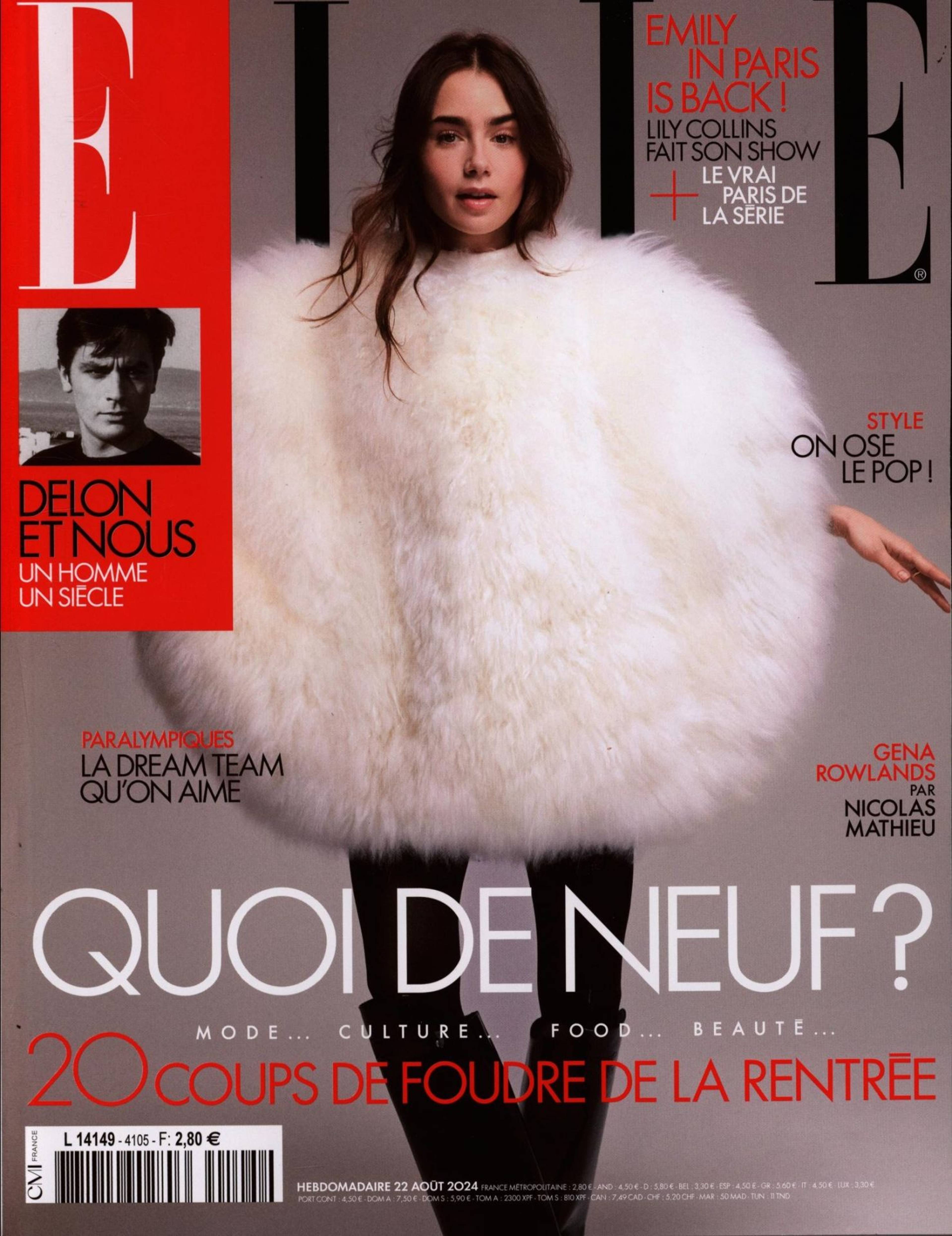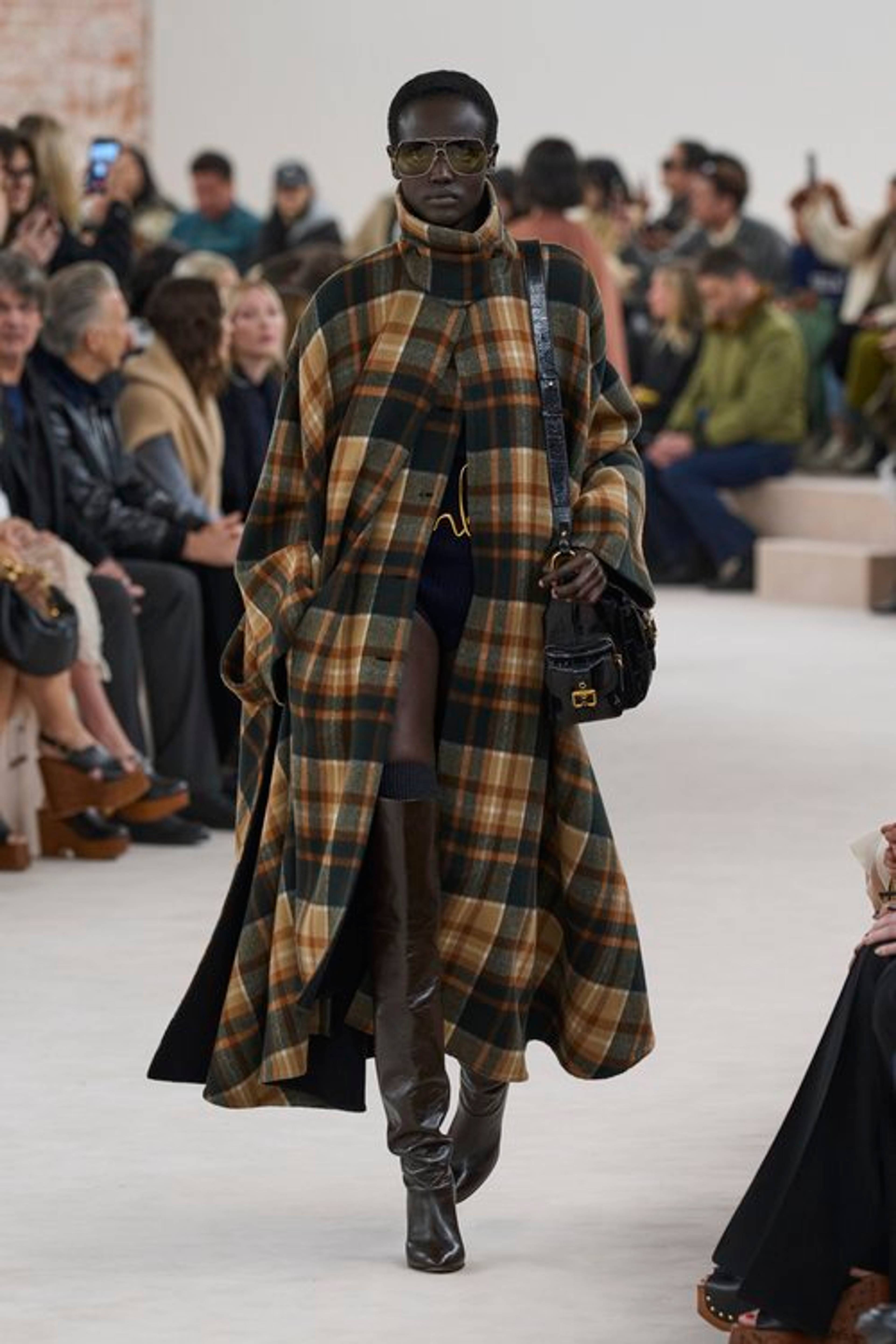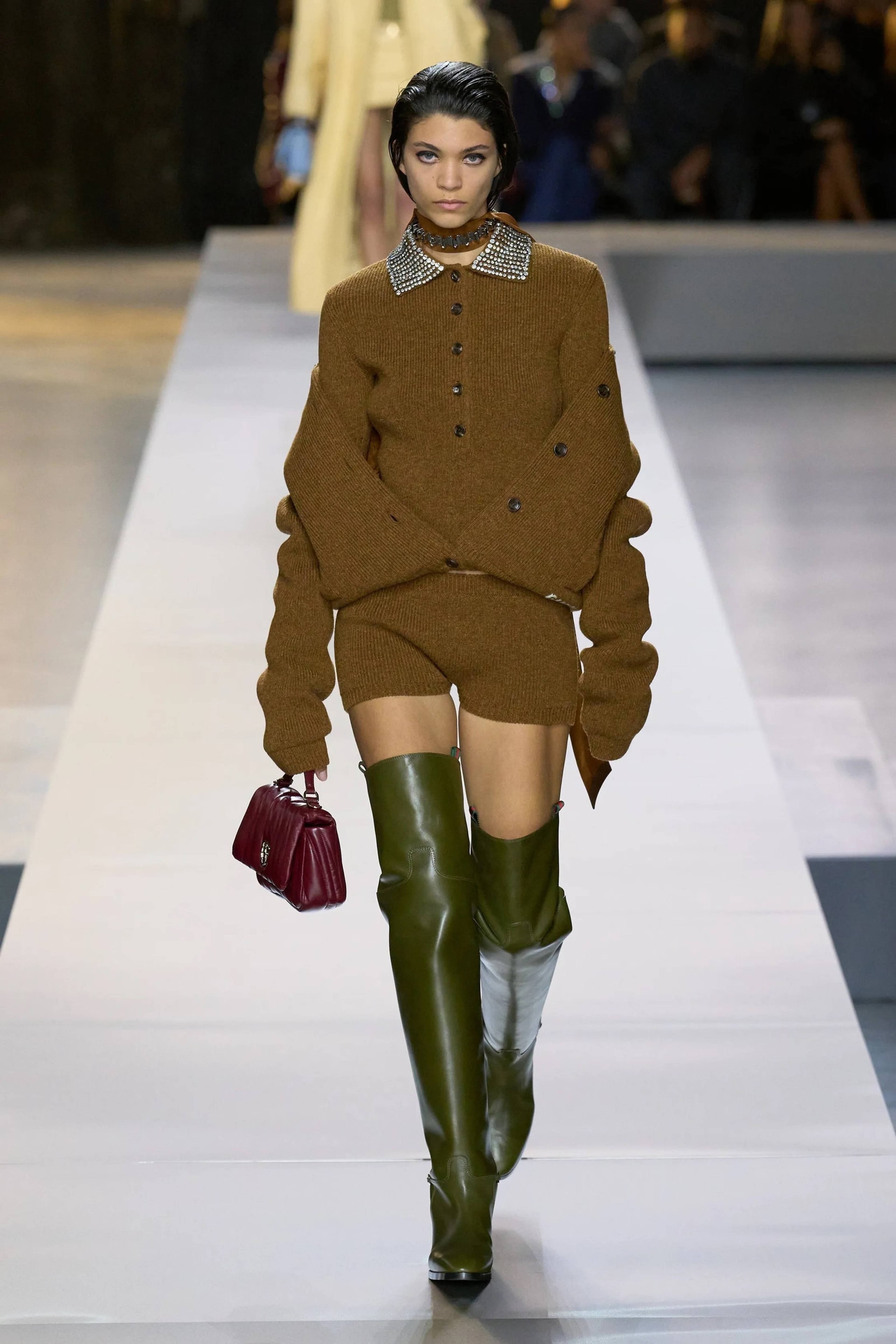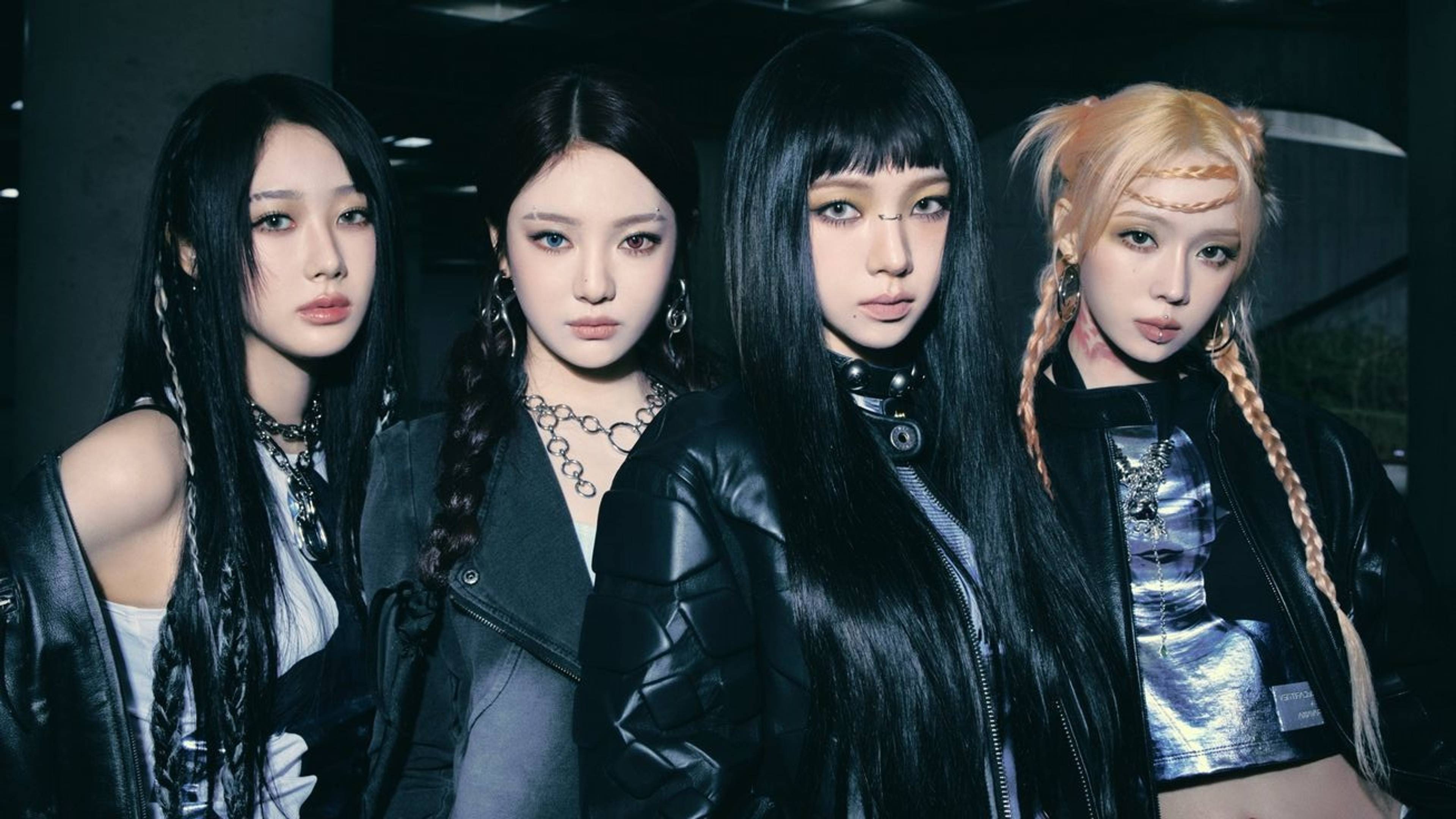In fashion, as in the myth of Orpheus and Eurydice, it’s forbidden to look back, even – perhaps especially – to what happened a month ago. Quoi de Neuf? (What’s new?) is the ritual yearly phrase headlining French fashion mags as August transitions into September, a few short weeks that mark the most important moment in fashion as it stands on the brink of the “new” – always an undefined value. The trope is “back to school,” as though fashion has something to teach us, but it’s more like standing on the edge of the holiday sea, brisk, exciting, a little frightening. It’s not for nothing that the French call September la rentrée – the re-entry.
There’s nothing so old as fashion’s call to the new and this French tradition is a call of a specific kind. The French have two words for new, using “neuf” or “neuve” for new as in just out of the shrinkwrap, and “nouveau” for “new to me,” making French Elle’s cover a call to consume in a particular way. Newness as in “neuf” isn’t something I’ve written about much in this column. As a fashion concept, we all know it can’t be sustained, environmentally but also, perhaps, personally. To be perpetually ahead of ourselves is a fashion-induced habit that can feel good to break.
French Elle cover, 22 August 2024
The rush of September’s image overhaul proposed by the glossy magazines means I’ve occasionally swallowed a look whole only to find I can’t digest it. The weirdness of adopting September’s new styles while looking like you wore them forever involves – as the collections are presented online and in print six months before they’re in the shops – a kind of conscious false consciousness. What’s at work here is a denial of transition, a denial of time itself. Fashion is the future, and we already know its timing is weird, like the American cultural critic Sianne Ngai’s “Bad Timing,” a paper renamed after the fact as “Paranoia,” in her groundbreaking 2005 work, Ugly Feelings. Bad timing is what happens when you realize, too late, what’s been going on all along. It also describes the situation of excluded subjects (Ngai chooses women experimental writers) coming to a “new” style just as the cultural hegemony decides it’s already outmoded.
A second-hand shopper, I delight in the worn, in all its senses, but also in the nouveau, what’s new to me. The newness I’ve demanded of myself this autumn is a new acceptance of the old. I’ve used September to downsize: selling what’s good but has gone unworn, giving or donating the rest. Out with the old, in with the old. Or in with… nothing. If I lean back into the nouveau (if not the neuf), it won’t be too difficult to repopulate my wardrobe with second-hand fantasies. Still, it’s a little melancholy to say goodbye to versions of myself that never transpired, new selves I’d imagined dressed in the clothes I’d take out of my wardrobe, try on, and put back again, reaching for something that felt more comfortable not physically, but conceptually.
De-influencers tell us to “shop in your wardrobe,” as though shopping were fashion’s crucial activity, which, perhaps, it is. Unboxing has replaced wearing, and digital fashion has been proposed as the solution to the desire for the physical new, though the deployment of garments on virtual avatars seems no more of a fix than the sort of projection provided by leafing through a fashion magazine. In 2021, Sophie Benson traced in Dazed how the digital purchase and storage of virtual garments, particularly if they involve blockchain or AI, was already just as environmentally harmful as fast fashion. Now you can even get digital fast fashion: virtual platform DRESSX offers a “free” Bershka skirt to anyone who signs up to the app. These emperor’s new clothes don’t so much provide fashion without waste but fashion without embodiment for the wearer, which is sometimes what fashion should be: not every look should be enacted. But this is fashion without what fall in particular leans into: sensual comfort.
Chloé Fall 2024 Ready-to-Wear
Gucci Fall2024 Ready-to-Wear
What’s new for fall is so often what’s old. Just as Meryl Streep as magazine editor, Miranda Priestly, withered, “Florals? For Spring? Groundbreaking,” this fall’s runways and shop-drops inevitably feature the expected range of retro, folk, and collegiate styles. APC’s Fall 24 campaign, “APC Academy” goes back to the brand’s preppy roots, even offering a pre-distressed version of its “Butler” jeans, upcycled pre-worn jeans donated by customers in return for a discount on a new pair.
Fall fashion is not just new-old but meta-old, recycling the tropes that (surprise-surprise!) greeted us on last year’s catwalks, themselves nesting recursive references to styles from previous eras, as well as fabrics that rely on artisan techniques (aran, tweed, anything “craft”) that make “old” a renewed “new” value in itself.
In any case, it’s impossible to be “new” in fashion. Even “new” styles rebound in fashion’s eternal return. The Y3K trend – originating not on the catwalk but on TikTok and in East Asian pop culture – is a retro vision of the future, often consciously referencing cyberpunk originals of the 1980s and 90s – Dune, The Matrix – and their (literal) reboots. As such it’s an ironic version of the future, always aware of its own backwards gaze.
K-pop group Aespa adopt Y3K style for the release of their last album, Armageddon (2024)
This is nostalgia for nostalgia. If fashion is about making a difference, this is the opposite of fashion, and yet it is still fashion as difference, the turning-over of a (new) fall leaf. “Repetition,” wrote Søren Kierkegaard, “is clothing that never becomes worn, that fits snugly and comfortably, that never pulls nor hangs too loosely.” Perhaps fall’s necessary layered coziness is not only physical but conceptual, swaddling (that’s a word I’ve seen in this month’s UK Vogue) us in the mental comfort of repetition.
___






